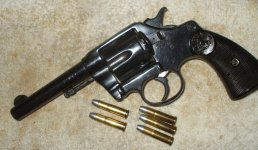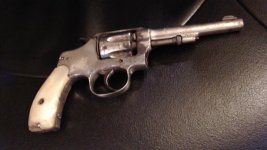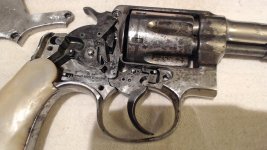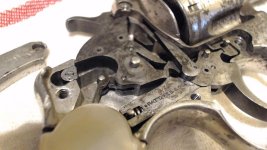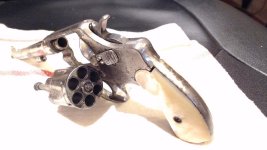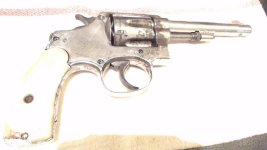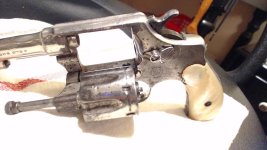The competition
More .32-20's, these from those guys in Hartford. The 4-1/2 inch barrel New Army was among the last made, dating to 1907. It was reblued somewhere along the line, but it's sound and shoots fine.
The 5 inch Army Special is from 1925. It's just what appears to be, a well kept revolver exhibiting some honest wear. Lock up is legendary Colt, like a bank vault! Shoots exceedingly well with Lyman 31108 cast bullets and 6.0 grains of DuPont's SR-4756. Rumor has it that Hodgdon is going to discontinue that powder.
More .32-20's, these from those guys in Hartford. The 4-1/2 inch barrel New Army was among the last made, dating to 1907. It was reblued somewhere along the line, but it's sound and shoots fine.
The 5 inch Army Special is from 1925. It's just what appears to be, a well kept revolver exhibiting some honest wear. Lock up is legendary Colt, like a bank vault! Shoots exceedingly well with Lyman 31108 cast bullets and 6.0 grains of DuPont's SR-4756. Rumor has it that Hodgdon is going to discontinue that powder.

